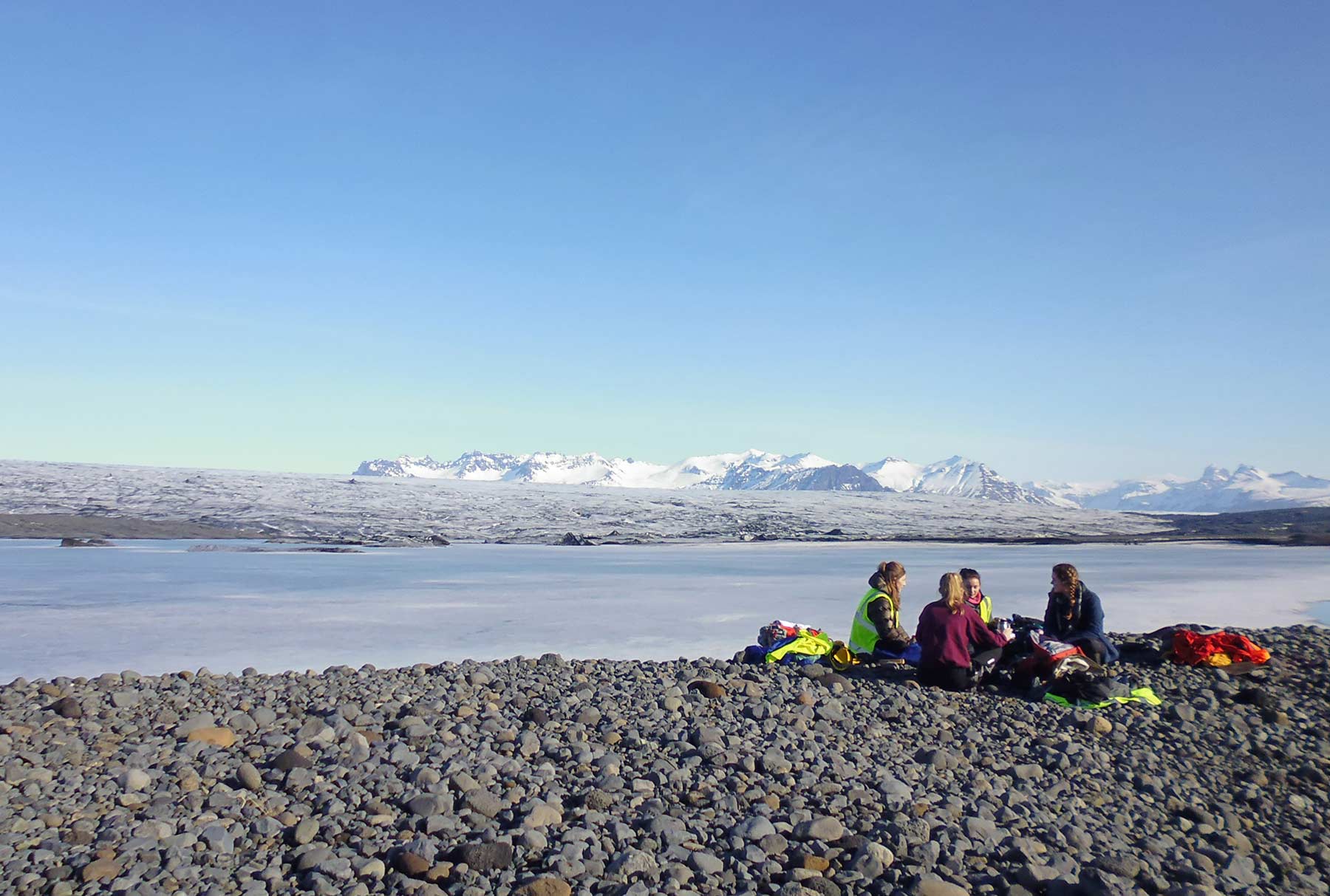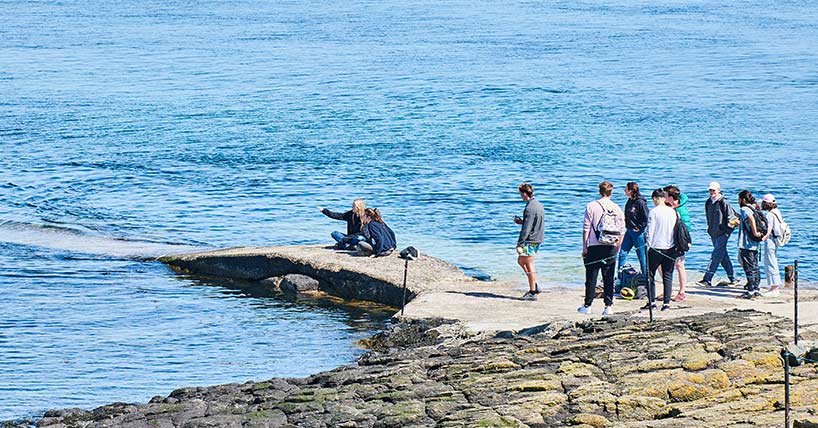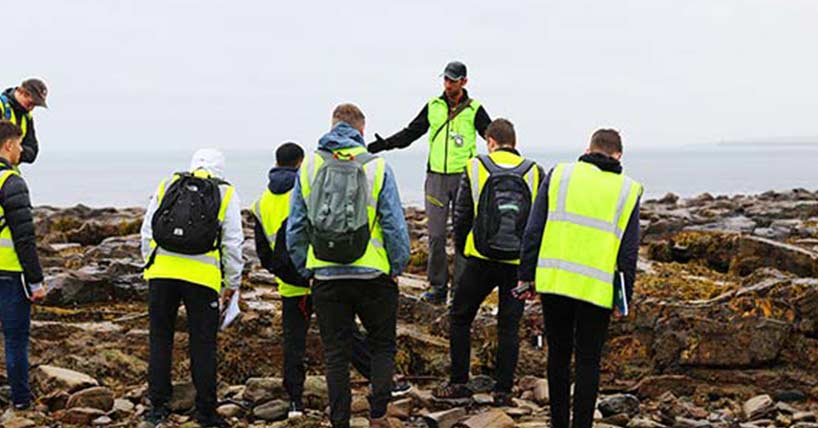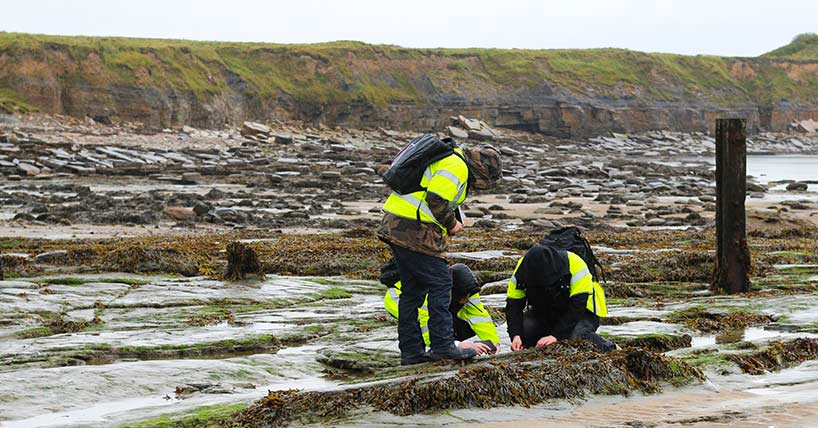Physical Geography
A world-leading group of scientists at the forefront of research on earth surface processes, environmental change, and shifting human-environment relationships.
Overview
Research blends cutting-edge field and lab-based science, remote sensing and GIS, with expertise in mathematical and statistical modelling, to make fundamental advances in geomorphology, glaciology, environmental change and geohazards.
Work is advanced through 5 streams:
- water science
- past environments
- glaciology
- ecosystems
- geomorphology / geohazards
Members of the group carry out research in Antarctica, Iceland, Patagonia, Peru, Turkey, USA, Tibet, Japan, Alaska, Greenland, Australia, China, and Europe. Staff also play leading roles in multiple international networks (DIMA, SCAR, MOXXII, IODP, ICDP).
Joint research with external organisations includes: the Wildfowl and Wetlands Trust, Ouseburn Catchment Partnership, Newcastle City Council, UK Met Office, British Antarctic Survey, British Geological Survey and the Cabinet Office’s Natural Hazards Partnership.
Our Research
Staff and postgraduate students within physical geography benefit from an inclusive and supportive research culture. Our academic staff conduct vibrant, high-quality research programmes supported by successful bids to highly competitive sources of funding, such as the UK Natural Environment Research Council (NERC).
Examples of recent research projects include:
- catchment dynamics and impacts of intense rainfall-induced floods (NERC SINATRA consortium)
- UKRI GCRF Living Deltas interdisciplinary research hub to safeguard delta futures through more resilient communities and sustainable development across the Red River and Mekong (Vietnam), and Ganges-Brahmaputra-Meghna (Bangladesh, India).
- new homonid discovery in South Africa
- Lake Suigetsu ultra-high-resolution palaeoclimate project (NERC-funded)
- impacts of recent catastrophic floods in the North of England (NERC-funded)
- impact of meltwater floods during the 2010 Eyjafjallajökull volcanic eruption in Iceland (NERC-funded)
We conduct our research in the field and laboratory using cutting-edge techniques. These are supported by our laboratories and field equipment, managed by our technical staff.
The University has also invested in our Cosmogenic Isotope Laboratory, which supports our research at Newcastle and externally, via collaborative projects.
Staff
Our research group staff have significant experience and expertise in analysis of physical geography.
Dr Rupert Bainbridge Post-doctoral Research Associate
Dr Louise Callard Lecturer in Physical Geography
Dr Rachel Carr Senior Lecturer in Physical Geography
Ana Contessa Acting Physical Geography Facilities Manager
Dr Nick Cutler Lecturer in Physical Geography
Dr Stuart Dunning Reader in Physical Geography
Dr Chris Hackney NU Academic Track Fellow (NUAcT)
Dr Andrew Henderson Reader in Physical Geography
Professor Steve Juggins Professor of Quantitative Paleoecology
Professor Andy Large Professor in River Science
Professor Darrel Maddy Prof of Quaternary Science
Dr Emma Pearson Principal Research Associate
Dr Matthew Perks Lecturer in Physical Geography
Dr Neil Ross Senior Lecturer in Physical Geography
Professor Andrew Russell Professor of Physical Geography
Emeritus Professor Tony Stevenson Emeritus Professor
Dr Maarten van Hardenbroek van Ammerstol Lecturer in Physical Geography
Facilities
Since 2014, research capacity in physical geography has been enhanced through new world-class laboratory facilities (Drummond labs, Houston lab, Sedimentology labs: combined £3M investment), supported by 4 technicians.
Our laboratories offer outstanding facilities for analysis of sediment geochemistry, paleoecology, physical characteristics of sediments, cosmogenic isotope and organic geochemistry.
Additional strategic investment in state-of-the-art fieldwork equipment has been coupled with new investment in sample refrigerated storage (cores, sediments, water samples) tripling our capacity.
Publications
- Hill EA, Carr JR, Stokes CR. A Review of Recent Changes in Major Marine-Terminating Outlet Glaciers in Northern Greenland. Frontiers in Earth Science 2017, 4, 111.
- Carr JR, Bell H, Killick R, Holt T. Exceptional retreat of Novaya Zemlya's marine-terminating outlet glaciers between 2000 and 2013. The Cryosphere 2017, 11(5), 2149-2174.
- Carr JR, Stokes CR, Vieli A. Threefold increase in marine-terminating outlet glacier retreat rates across the Atlantic Arctic: 1992–2010. Annals of Glaciology 2017, Epub ahead of print.
- Kirkham JD, Rosser NJ, Wainwright J, Vann-Jones EC, Dunning SA, Lane VS, Hawthorn DE, Strzelecki MC, Szczucinski W. Drift-dependent changes in iceberg size-frequency distributions. Scientific Reports 2017, 7, 15991.
- Sugden DE, Hein AS, Woodward J, Marrero SM, Rodes A, Dunning SA, Stuart FM, Freeman SPHT, Winter K, Westoby MJ. The million-year evolution of the glacial trimline in the southernmost Ellsworth Mountains, Antarctica. Earth and Planetary Science Letters 2017, 469, 42-52.
- Dufresne A, Dunning SA. Process dependence of grain size distributions in rock avalanche deposits. Landslides 2017, Epub ahead of print.
- Schmidt M, Fuchs M, Henderson ACG, Kossler A, Leng MJ, Mackay AW, Shemang E, Riedel F. Paleolimnological features of a mega-lake phase in the Makgadikgadi Basin (Kalahari, Botswana) during Marine Isotope Stage 5 inferred from diatoms. Journal of Paleolimnology 2017, Epub ahead of print.
- Roberts SJ, Monien P, Foster LC, Loftfield J, Hocking EP, Schnetger B, Pearson EJ, Juggins S, Fretwell P, Ireland L, Ochyra R, Haworth AR, Allen CS, Moreton SG, Davies SJ, Brumsack H-J, Bentley MJ, Hodgson DA. Past penguin colony responses to explosive volcanism on the Antarctic Peninsula. Nature Communications 2017, 8, 14914.
- Oksman M, Weckström K, Miettinen A, Juggins S, Divine DV, Jackson R, Telford R, Korsgaard NJ, Kucera M. Younger Dryas ice margin retreat triggered by ocean surface warming in central-eastern Baffin Bay. Nature Communications 2017, 8, 1017.
- Starkey E, Parkin G, Birkinshaw S, Large A, Quinn P, Gibson C. Demonstrating the value of community-based (‘citizen science’) observations for catchment modelling and characterisation. Journal of Hydrology 2017, 548, 801–817.
- Large, A., Gilvear, D. & Starkey, E. (2017) Ecosystem Service-Based Approaches for Status Assessment of Anthropocene Riverscapes, in: Kelly, J.M., Scarpino, P., Berry, H., Syvitski, J. & Meybeck, M. (eds) Rivers of the Anthropocene, University of California Press.
- Cordier S, Briant B, Bridgland D, Herget J, Maddy D, Mather A, Vandenberghe J. The Fluvial Archives Group: 20 years of research connecting fluvial geomorphology and palaeoenvironments. Quaternary Science Reviews 2017, 166, 1-9.
- Cara M, Van der Woerd J, Alasset PJ, Benjumea J, Mériaux AS. The 1905 Chamonix earthquakes: active tectonics in the Mont Blanc and Aiguilles Rouges massifs. Swiss Journal of Geosciences 2017, epub ahead of print.
- Roberts SJ, Monien P, Foster LC, Loftfield J, Hocking EP, Schnetger B, Pearson EJ, Juggins S, Fretwell P, Ireland L, Ochyra R, Haworth AR, Allen CS, Moreton SG, Davies SJ, Brumsack H-J, Bentley MJ, Hodgson DA. Past penguin colony responses to explosive volcanism on the Antarctic Peninsula. Nature Communications 2017, 8, 14914.
- Perks MT, Warburton J, Bracken L, Reaney SM, Emery SB, Hirst S. Use of spatially distributed time-integrated sediment sampling networks and distributed fine sediment modelling to inform catchment management. Journal of Environmental Management 2017, (e-Pub ahead of print).
- Jeofry H, Ross N, Corr HFJ, Li J, Gogineni P, Siegert MJ. A deep subglacial embayment adjacent to the grounding line of Institute Ice Stream, West Antarctica. Exploration of Subsurface Antarctica: Uncovering Past Changes and Modern Processes. Geological Society, London, Special Publications 2017, 461.
- Paxman GJG, Jamieson SSR, Ferraccioli F, Bentley MJ, Forsberg R, Ross N, Watts AB, Corr HFJ, Jordan TA. Uplift and tilting of the Shackleton Range in East Antarctica driven by glacial erosion and normal faulting. Journal of Geophysical Research: Solid Earth 2017, 122(3), 2390-2408.
- Carrivick JL, Tweed F, Ng F, Quincey D, Malalieu J, Ingeman-Nielsen T, Mikkelsen A, Palmer S, Yde J, Homer R, Russell A, Hubbard A. Ice-Dammed Lake Drainage Evolution at Russell Glacier, West Greenland. Frontiers in Earth Science 2017, 5, 100.
- Heiri O, Tóth M, van Hardenbroek M, Zweifel N. Chironomiden- und Cladocerenfossilien. In: Bleicher, N; Harb, C, ed. Zürich-Parkhaus Opéra. Eine neolithische Feuchtbodenfundstelle. Band 3: Naturwissenschaftliche Analysen und Synthese. Zürich, Germany: Baudirektion Kanton Zürich, Amt für Raumentwicklung, Kantonsarchäologie, 2017, pp.30-50.
- Monteath A, van Hardenbroek M, Davies L, Froese D, Langdon PG, Xu X, Edwards ME. Chronology and glass chemistry of tephra and cryptotephra horizons from lake sediments in northern Alaska, USA. Quaternary Research 2017, 88(2), 169-178.
- Rinta P, Bastviken D, Schilder J, van Hardenbroek M, Stötter T, Heiri O. Higher late summer methane emission from central than northern European lakes. Journal of Limnology 2017, 76(1), 52-67.
- Morlock MA, Schilder J, van Hardenbroek M, Szidat S, Wooller MJ, Heiri O. Seasonality of cladoceran and bryozoan resting stage δ13C values and implications for their use as palaeolimnological indicators of lacustrine carbon cycle dynamics. Journal of Paleolimnology 2017, 57(2), 141-156.



